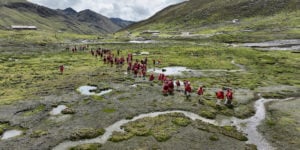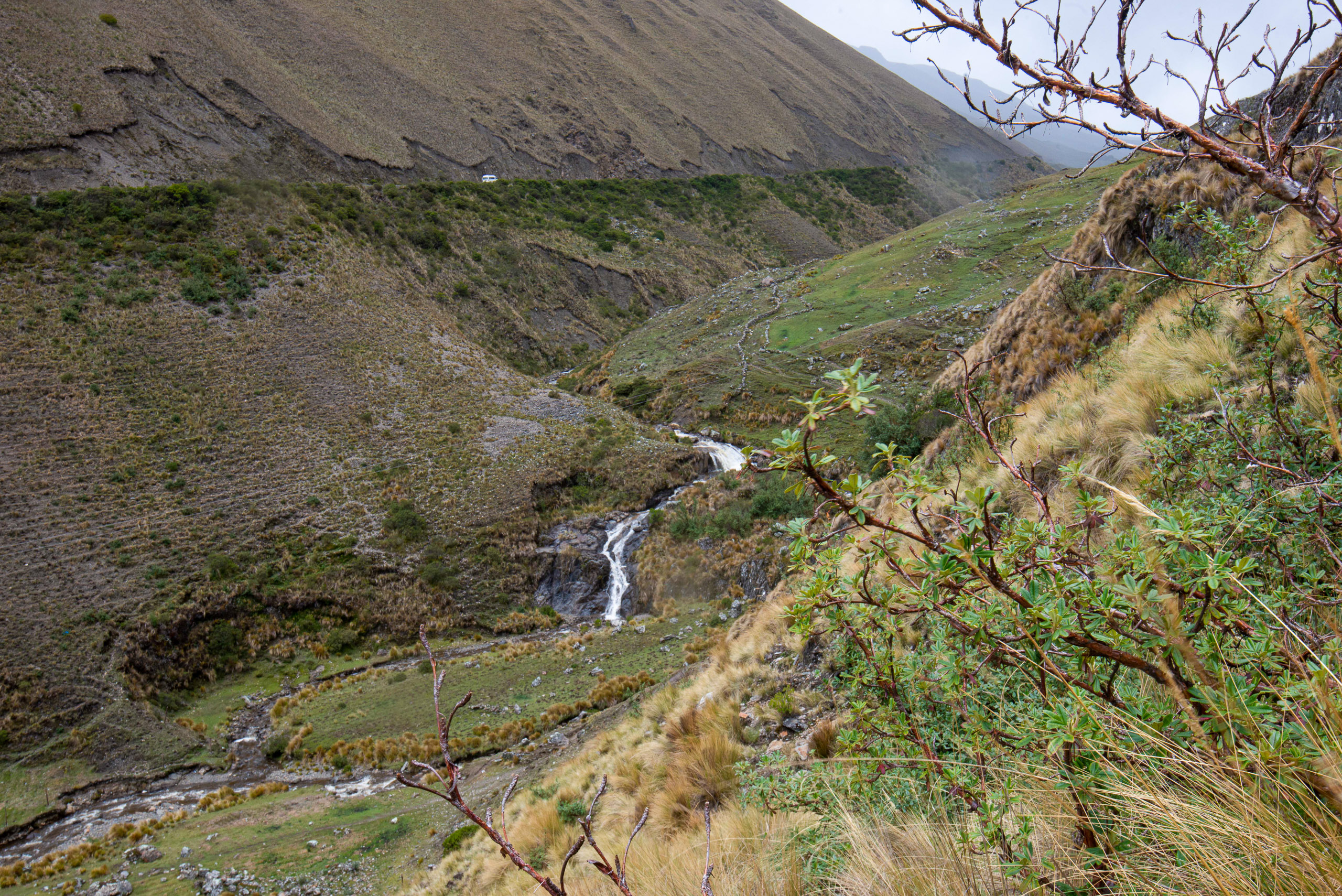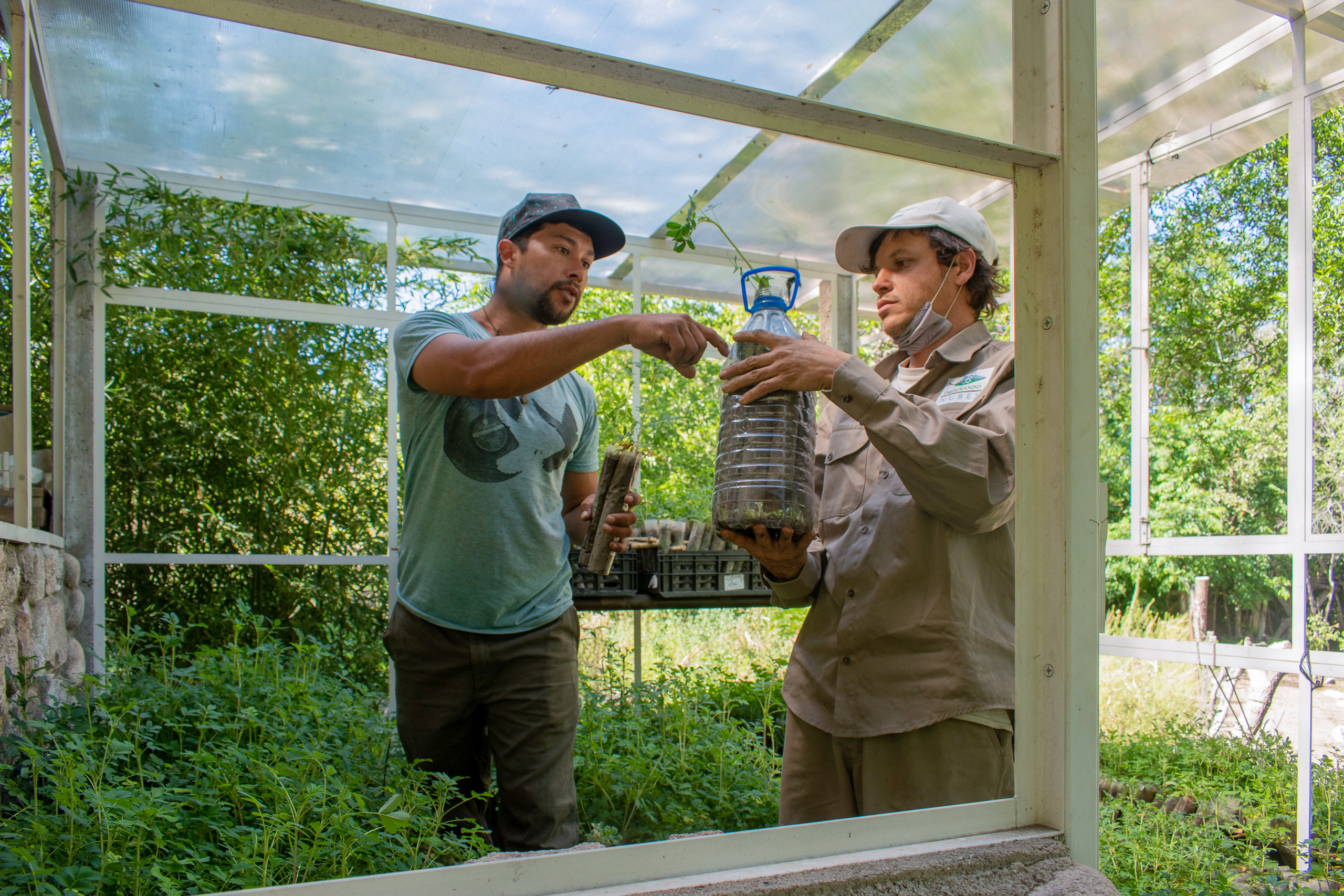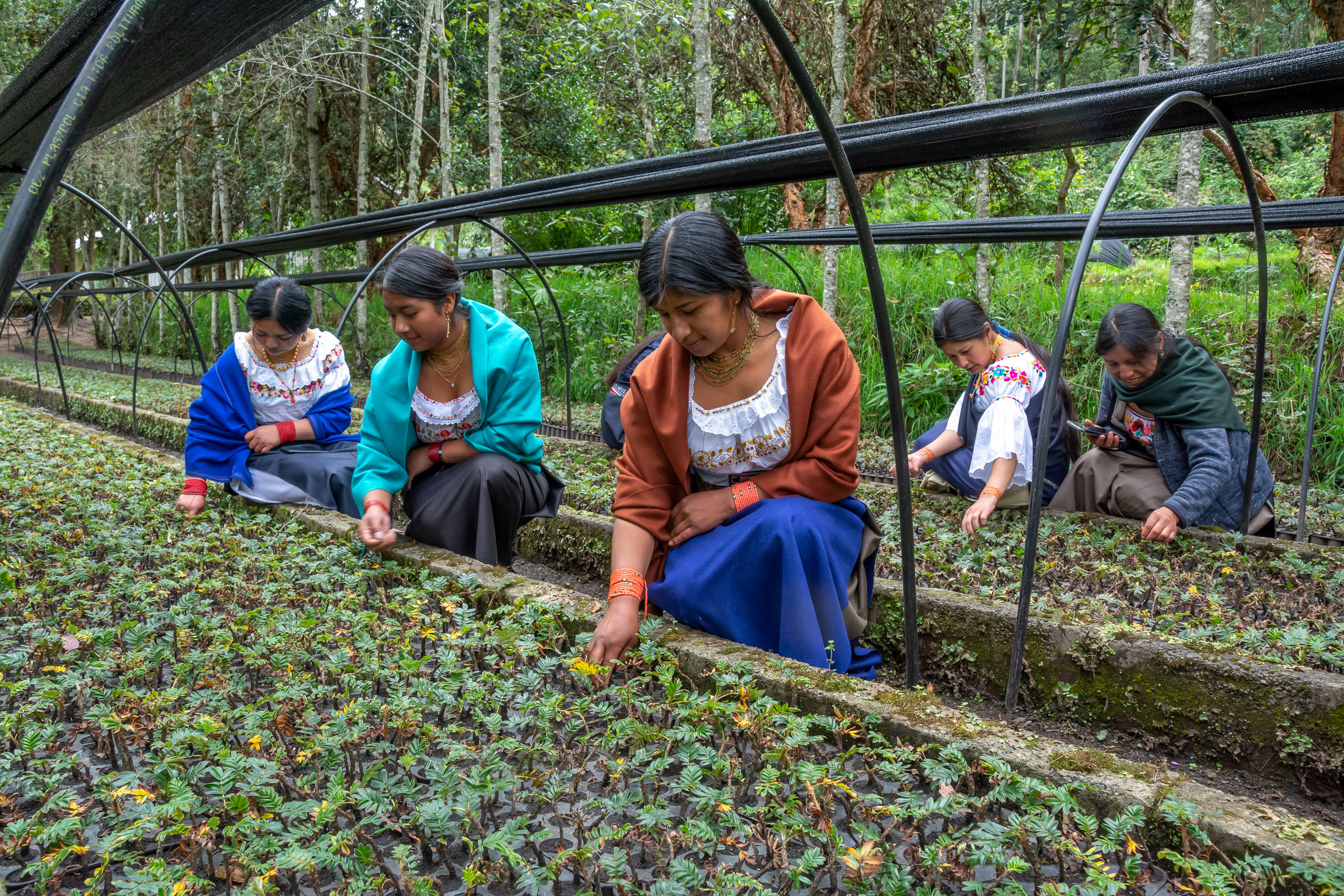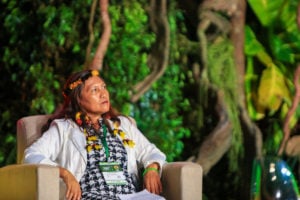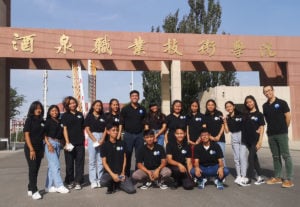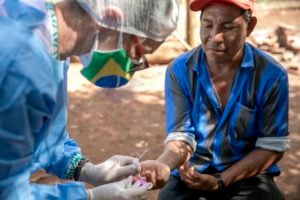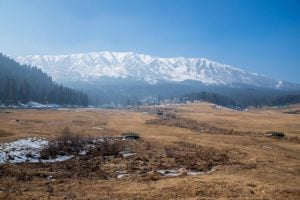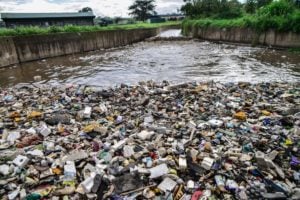Depending on the country, this species has a different name. In Peru, it is known as queñual, queuña or queñoa. In Bolivia, it is called kewiña. In Ecuador, it’s known as the yagual; and in Argentina, tabaquillo.
Whatever you call it, Polylepis is a high Andean genus comprising up to 45 species of trees and shrubs, distributed throughout the South American Andes, from Venezuela all the way to Patagonia, and found up to 5,000 metres above sea level.
Despite being little known, and with only 5% of its native coverage remaining, the queñual, with its twisted trunks, has become the protagonist of an inspiring story to protect water in the region.
Recovering traditions
In 2000, inspired by the ancestral customs of the communities of his native Cusco, in the Peruvian Andes, biologist Constantino Aucca created ECOAN, an NGO that promotes the conservation of endangered species and threatened Andean ecosystems. Since then, the organisation has reforested 4.5 million plants in 16 protected areas, involving 37 Andean communities in the process.
Aucca’s tireless work came to the attention of Florent Kaiser, a French-German forestry engineer who had worked on large-scale conservation projects on every continent.
Visiting Peru in 2018, Aucca invited Kaiser to one of the first editions of Queuña Raymi, a festival in which communities in Cusco dedicate themselves to reforesting this species. Seeing 700 people of all ages taking part in this ancestral tradition, it was clear to the engineer that this was the sort of initiative that he had long been hoping to engage with.
As one of the reforestation activities came to close, and the festival turned towards a celebratory mood of singing and dancing, Kaiser asked Aucca what his dream was. Without hesitation, he replied: “to spread this idea across all the Andes”.
And so their collaboration was born. That same year, to help finance Aucca’s reforestation ambitions, Kaiser established the US-based NGO Global Forest Generation (GFG) and sought funding from around the world. Looking to realise the Cusco biologist’s dreams of replicating ECOAN’s work in different countries, together they co-founded a new organisation: Acción Andina.
Today, Acción Andina operates in Peru, Argentina, Ecuador, Bolivia and Chile. Since 2018, they have reportedly planted nearly 10 million trees, restored more than 4,000 hectares of Andean forests and protected more than 11,000 hectares of native forests.
Spreading hope
Throughout the Andes, stretches of native queñual have faced pressures from deforestation, making way for cattle ranching or logged for use as firewood. The tree’s bark has also been used for medicinal purposes. All this has been happening despite its extremely high importance to the environment: “It plays a fundamental role in terms of climate control and water security,” says Aucca.
The roots of the queñual can anchor even in stony ground, helping to prevent soil erosion, but also promoting the formation of mosses and grasses, which retain moisture and capture rainwater. Polylepis forests can contribute to creating important water reserves, as their capture of rain and moisture at ground level plus their capture of fog at branch level make them natural reservoirs that improve water distribution to streams. Queñual also grow near the edges of glaciers, where they create a green belt that can help protect the ice masses, buffering them from changes in temperature.
Given the sustained growth of his reforestation initiatives, the most frequent question Aucca is asked is how he has been able to succeed where so many others have failed. For him, the formula is simple: respect.
“If we know that environmental deterioration originates in human actions, then any recovery scheme must ensure that people are part of the solution and not part of the problem,” Aucca says. “In the face of so many proposals that make invisible or displace the communities where they are tried to be applied, the work of Acción Andina places them as the main protagonists.”
“Here in South America, there are problems and needs, but many people working to achieve something tangible for the planet,” the biologist adds. Over the years, Acción Andina has duly worked to identify areas where high Andean communities and organisations may be interested in joining their efforts, and share an affinity for their approach. Slowly but surely, their dream has spread to a wider cast.
To plant the tree cuttings, the communities organise themselves to mobilise their labour force, in the style of the Inca “minka”, a system of work in which the family (or “ayllu”, in the Quechua language) participated in works of communal benefit. Acción Andina “hasn’t invented anything,” Aucca admits. “We are only recovering very old Andean traditions. That’s why we have to listen to the communities and learn from them, so that their knowledge is not lost.”
Acción Andina’s reforestation of the Polylepis aims to optimise its ecological functions of carbon storage and water retention, for which up to 2,400 trees per hectare can be planted. And, as Aucca tells Diálogo Chino, by forming a compact forest, “the trees are more resistant to animal, human and environmental pressures”.
The formula has reportedly proven successful in every location it has been applied, even after more difficult starts. “At the beginning, there was mistrust because several previous projects with state or private entities had not ended well, so the awareness-raising process was slow and very gradual,” says Richards Challapa, 41, leader of the highland community of Cancosa, in Tarapacá, Chile.
Now, about 35 of the community’s 200 people are directly involved in the reforestation of the Polylepis. “The idea that the community could be an active part of the process had been lost; they only watched from the outside or accompanied [outsiders involved in replanting],” Challapa says. “But not here. With this project, despite the fact that the queñoa has been planted in areas far from our homes, the people are so motivated that now, they even want to put it in the town square.”
In Ecuador, Acción Andina has made some progress in their mission with the support of FONAG, a government fund for the protection of water, which has been a partner since 2020. Acción Andina also carries out projects with private institutions in Ecuador, like Andean Adventures and bird organisation Aves y Conservación.
In the Paluguillo reserve in the highlands of Pichincha, a province in north-central Ecuador, Polylepis can now be seen almost everywhere, having experienced years of decline. Diana Sópalo, a university student from San José del Tablón Alto, a community adjacent to the reserve, has been involved in planting activities here for four years, including with Acción Andina’s work since 2020. The 28-year-old has become so invested in planting that she is now studying environmental management. She highlights other successes that have helped to boost conservation and the tree’s recovery. “We have removed livestock from the area and banned burning in these fields,” says Sópalo. “We have to protect it.”
The Earthshot Prize, and the future
These efforts have helped Acción Andina garner significant attention – and prizes. Last November, the third edition of the Earthshot Prize was held in Singapore. Co-founded by the United Kingdom’s Prince William and nature broadcaster David Attenborough, this award provides financial support to inspiring projects combating climate change across the globe.
In the latest edition of the prize, Acción Andina was the winner in the Protect and Restore Nature category. And with that, they took home £1 million (US$1.278 million) to continue to pursue its dream across South America.
“If we weren’t optimistic, we wouldn’t have achieved anything,” says Kaiser. “We are on the right track, but the responsibility is greater because now, we can talk to more donors, personalities and officials.”
Many people ask us what we will do with the $1.2 million prize. I tell them that we have 1.2 million more plants to plant. And by 2045, we want to have planted 100 million trees. This is just the beginning.Constantino Aucca, co-founder of ECOAN and Acción Andina
Aucca says: “Many people ask us what we will do with the $1.2 million prize. I tell them that we have 1.2 million more plants to plant. And by 2045, we want to have planted 100 million trees. This is just the beginning.”
Apart from planting trees, Acción Andina aims to invest in approaches that will allow them to make broader impacts beyond their projects. Its leaders hope to expand and strengthen their teams, improve monitoring and management systems, work on their communications and attract more media coverage.
“Acción Andina is a hundred-year project,” says Kaiser. “To achieve this, the numbers need to grow, both in terms of partners and communities involved.” He notes that the organisation is aiming for 80% of its funding to come from the Andean region itself, including governments and local companies.
Further down the line, Acción Andina has ambitions to expand its model to the rest of the world – not by transplanting the Polylepis from its native area, but by continuing to focus on local species suited to the areas of work. Humanity, Kaiser says, has already caused many ecological disasters by moving animal and plant species from one habitat to another: “Each ecosystem must recover with its own species.”
